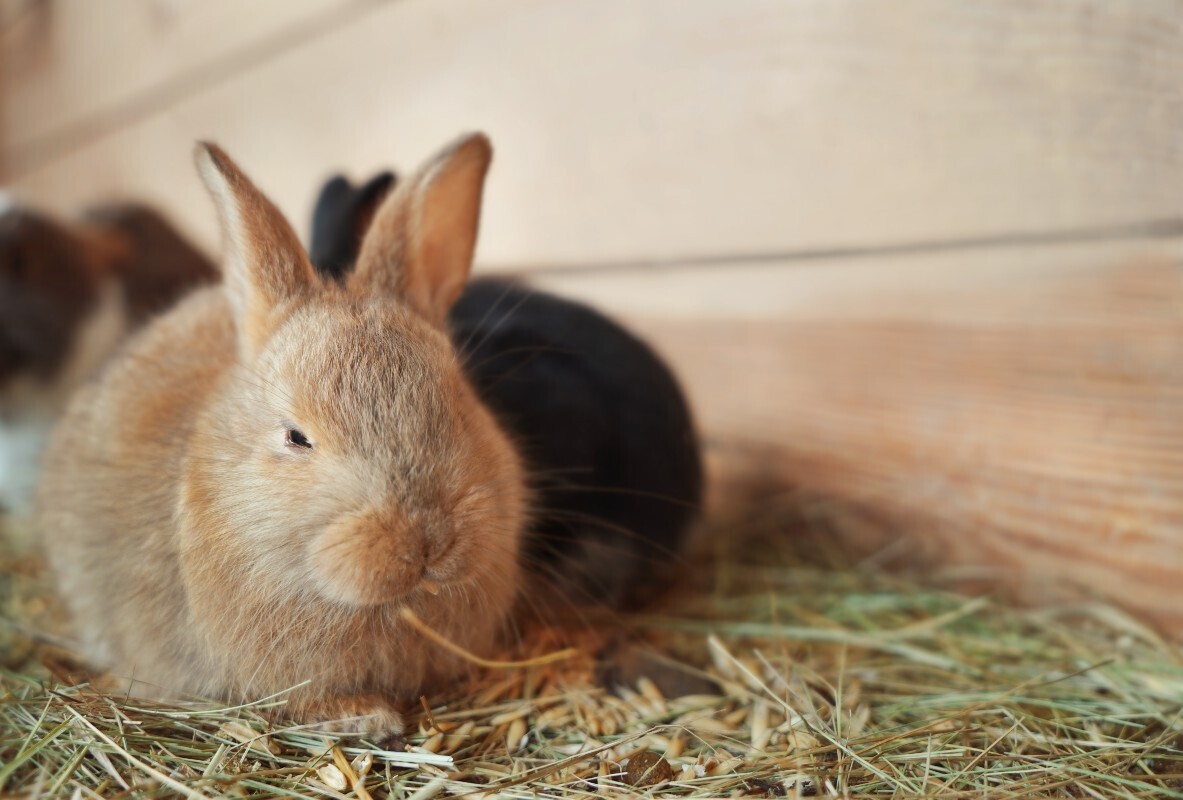
Small Pet Experts at The Little Hay Co Explain the Science Behind ‘Magic’ 12% Hay Moisture Content
The Little Hay Co, a specialist feeding hay company based in the UK, explains the reasons why it is important for small animal hay to have a balanced 12% moisture content.

Feeding hay is an important element of the diet of thousands of animals, with the average domestic rabbit eating a bundle the size of their body mass every day. Like Rabbits, other rodents and birds, such as guinea pigs, chinchillas, chickens and tortoises rely on hay to aid digestion and stop their teeth from overgrowing.
The Little Hay Co, a specialist feeding hay producer based in the Cotswolds, has explained why any hay, for any small animal, should have a balanced 12% moisture content, the optimal amount to support healthy pets, supplemented with natural grass, occasional treats and small quantities of pellets.
The Ideal Moisture Content for Premium Hay Products
Using an innovative production, baling and drying technique, The Little Hay Co creates consistent batches of high quality Meadow, Silky, Timothy Hay and Cotswold sweet hay, which benefit the health of varied small pet species.
The company indicates that moisture content is paramount, reducing risks of mould, dampness and contaminants within the hay, which can lead to digestion problems and other issues.
Backed by a study conducted by the University of Minnesota, the 'magic' 12% moisture level is so-called because:
- Dried hays and grasses with 12% moisture have less exposure to mould growth and remain an excellent food source for foraging and feeding.
- Hay with excess moisture of 15% or above can pose a fire risk in storage environments.
- Toxins such as aspergillus generate mould growth and potential rot causing health problems in animals consuming damp hay.
Any baled hay with moisture above 15% is considered unsuitable for feeding, particularly for animals with underlying health conditions or species vulnerable to diseases caused or affected by mould.
The objective is to have minimal spores in hay for animals of less than one million units per gram, achieved through baling and storing hay with a preserved 12% moisture content.
Hay Production Techniques and Moisture Control
Many hay producers deal with myriad challenges, where the weather can mean they have limited windows of opportunity to harvest hay – causing higher moisture levels than are recommended. They often need to decide whether to bale or not when baling will mean moisture levels are too elevated to guarantee quality.
Mould spores are only one potential side effect of high moisture, where bales that are damp in the middle can ignite in storage, where the centre of the bale is significantly warmer than the air temperature around it.
Hay that has been baled at elevated moisture rates of 20% or above is significantly more likely to develop mould and rot, which means the protein and carbohydrate value of the feed diminishes and will often be refused by animals due to high toxicity and an unpleasant taste.
However, The Little Hay Co recommends far higher moisture specificity since even bales with 15% to 20% moisture can 'sweat' due to microbes, causing deterioration.
It isn't solely the baling process that affects the quality and suitability of feed for small animals – it is the knowledge, skill and expertise of the hay producer and the methods they use for baling and storing hay to preserve the moisture content and nutritional value.
Maintaining Quality Standards in Premium Hay Production
Alexander, the farmer behind The Little Hay Co, says: "The magic 12% moisture content is widely accepted throughout the hay production and animal feed sector, and yet many products remain on the market that are less than suitable for animal owners and smallholdings who prioritise quality, natural feed.
Our hay farming methodology is grounded in traditional mowing and tedding but with a significant difference in how we collect and bale. Rather than baling hay in the field, as is the norm, we transport freshly mown hay to our specialist production barns to ensure weather-controlled conditions.
This process means we can achieve that perfect 12% moisture content in every bale, with hay collected and loosed in a maximum 24-hour period to satisfy our commitment to producing the finest, greenest, most fragrant and nutritious hay products that animals relish."
Alongside a range of hays, The Little Hay Co also produces bedding, treats and forage mixes, with 25% discounts for repeat order subscribers and same-day shipping on all weekdays for UK orders placed before 1 pm.
Read more about The Little Hay Co - The Little Hay Co Advocates for Natural Feeding as Commercial Rabbit Food Fails to Meet Consumer Standards
Media Contact:
Masie Copestake
The Little Hay Company
Instagram: @littlehayco
About The Little Hay Co
The Little Hay Co is a producer of premium, high-quality, delicious hay for rabbits and other small animals, based in the heart of the Costwolds, UK. The premium hay producer grows specially selected grass species, harvested at the optimum moment to ensure the creation of quality pet hay, to encourage the best daily intake of food and the best welfare for pets, clean from harmful spores.
***
Source Company: https://littlehayco.com/
